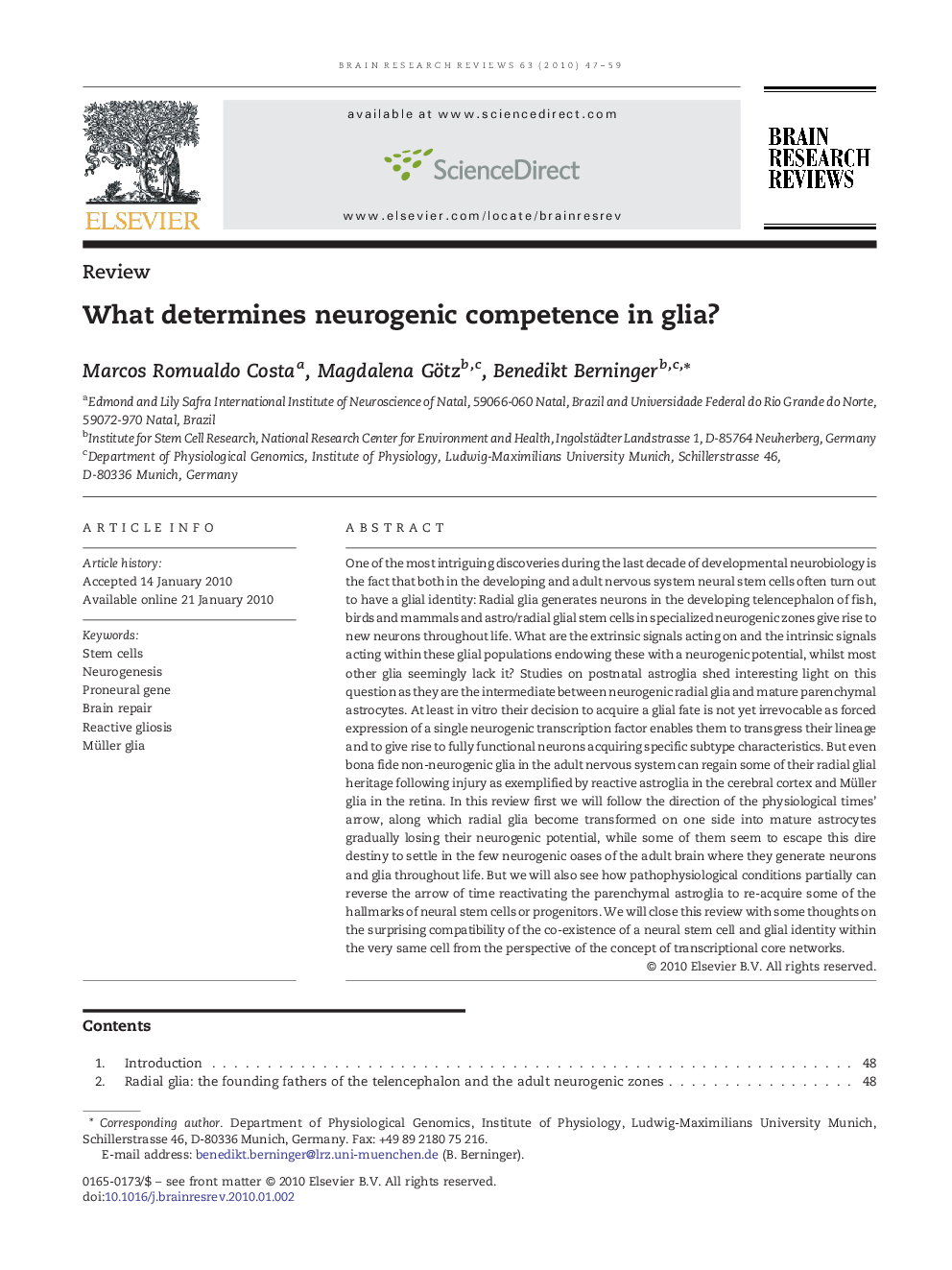| کد مقاله | کد نشریه | سال انتشار | مقاله انگلیسی | نسخه تمام متن |
|---|---|---|---|---|
| 4333648 | 1614473 | 2010 | 13 صفحه PDF | دانلود رایگان |

One of the most intriguing discoveries during the last decade of developmental neurobiology is the fact that both in the developing and adult nervous system neural stem cells often turn out to have a glial identity: Radial glia generates neurons in the developing telencephalon of fish, birds and mammals and astro/radial glial stem cells in specialized neurogenic zones give rise to new neurons throughout life. What are the extrinsic signals acting on and the intrinsic signals acting within these glial populations endowing these with a neurogenic potential, whilst most other glia seemingly lack it? Studies on postnatal astroglia shed interesting light on this question as they are the intermediate between neurogenic radial glia and mature parenchymal astrocytes. At least in vitro their decision to acquire a glial fate is not yet irrevocable as forced expression of a single neurogenic transcription factor enables them to transgress their lineage and to give rise to fully functional neurons acquiring specific subtype characteristics. But even bona fide non-neurogenic glia in the adult nervous system can regain some of their radial glial heritage following injury as exemplified by reactive astroglia in the cerebral cortex and Müller glia in the retina. In this review first we will follow the direction of the physiological times' arrow, along which radial glia become transformed on one side into mature astrocytes gradually losing their neurogenic potential, while some of them seem to escape this dire destiny to settle in the few neurogenic oases of the adult brain where they generate neurons and glia throughout life. But we will also see how pathophysiological conditions partially can reverse the arrow of time reactivating the parenchymal astroglia to re-acquire some of the hallmarks of neural stem cells or progenitors. We will close this review with some thoughts on the surprising compatibility of the co-existence of a neural stem cell and glial identity within the very same cell from the perspective of the concept of transcriptional core networks.
Journal: Brain Research Reviews - Volume 63, Issues 1–2, May 2010, Pages 47–59